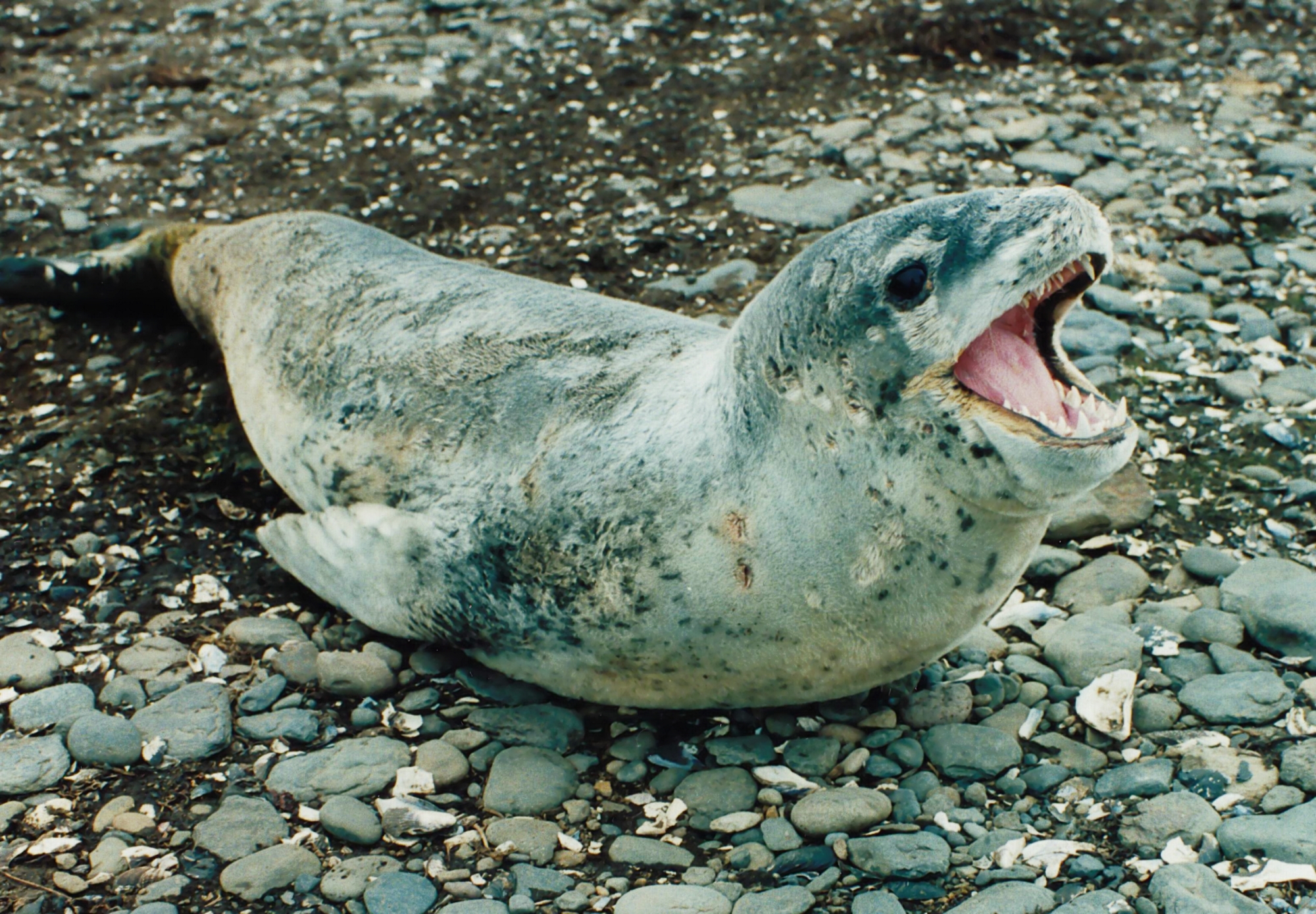The leopard seal is the second largest seal in the Antarctic. It is most common along the coast of Antarctica and sub-Antarctic islands but they can also be found along southern Australia, New Zealand and other such areas. The leopard seal is quite large, the male generally around 17 feet or 5 meters and weighing around 454 kilograms or a 1000 pounds. It has a lifespan of twenty-six years, possibly more. Killer whales and large sharks are the only natural predators of this formidable seal.
The leopard seal has an unusual jaw that opens to 160 degrees and allows it to bite large animals. The leopard seal is a curious predator, sometimes playing with penguins that it does not intend to eat. Smaller leopard seals feed on squids and fish while larger ones may prey on penguins, and much less frequently other seals such as carbeater and elephant seals. Sea birds have also been found in leopard seal scat.
Leopard seals are potentially dangerous towards humans but attacks are rarely reported.
Blog Archive
Popular Posts
-
The olm is a blind amphibian living in the subterranean waters of caves in parts of Europe including Albania, Serbia and several others. T...
-
Coatis are also known as the Brazilian aardvark, Mexican tejon, hog-nosed coon, pizotes, crackoons and snookum bears and they are a member...
-
Researchers in the Polytechnic University of Marche in Ancona, Italy have found three new species in the oxygen-free pits of the Mediterra...
-
Meerkats are a small rodent, part of the mongoose family. They live in the Kalahari Desert in South Africa. Meerkats live in groups, often...
-
The coelacanth is the oldest living fish to date. Until it's recent discovery, it was believed to have been extinct over 65 million ye...
-
The star-nosed mole is a small hamster sized rodent found in wet areas of eastern Canada and north-eastern United States. These animals ar...
-
The capybara is the largest member of the rodent family. They are sometimes called "water pigs" because of their great size. Adu...
-
The Shetland Sheepdog, sometimes shortened to Sheltie, is a domestic breed of excitable, and energetic herding dog. They are partly derive...
-
Look at this bird, it is a loggerhead shrike, a species of shrike. It can be found Southern Ontario, Quebec Alberta, and south to Mexico....
-
Komondor dogs are a large, domesticated Hungarian breed of white, guardian dogs with a long, rope-like coat. These dogs are sometimes call...
Followers
Powered by Blogger.






0 comments:
Post a Comment